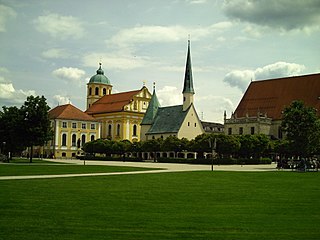
Altötting is a town in Bavaria, capital of the district Altötting of Germany. For 500 years it has been the scene of religious pilgrimages by Catholics in honor of Mary, including a visit by Pope John Paul II in 1980 and one by Pope Benedict XVI in 2006.

Our Mother of Perpetual Succour, colloquially known as Our Lady of Perpetual Help), is a Catholic title of the Blessed Virgin Mary associated with a 15th-century Byzantine icon and a purported Marian apparition. The image was enshrined in the Church of San Matteo in Via Merulana from 1499 to 1798 and is today permanently enshrined in the Church of Saint Alphonsus of Liguori in Rome, where the novena to Our Mother of Perpetual Help is prayed weekly.
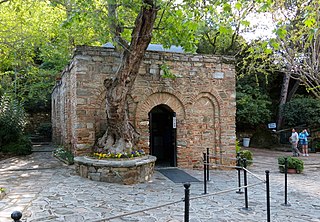
The House of the Virgin Mary is a Catholic shrine located on Mt. Koressos in the vicinity of Ephesus, 7 kilometres (4.3 mi) from Selçuk in Turkey.

Salus Populi Romani is a Catholic title associated with the venerated image of the Blessed Virgin Mary in Rome. This Byzantine icon of the Madonna and Child Jesus holding a Gospel book on a gold ground, now heavily overpainted, is kept in the Borghese (Pauline) Chapel of the Santa Maria Maggiore. Pope Francis has constructed a burial vault near the icon, intended to be his final resting place.

Our Lady of Aparecida, is a title of the Blessed Virgin Mary associated with the Immaculate Conception.

Marian devotions are external pious practices directed to the person of Mary, mother of Jesus, by members of certain Christian traditions. They are performed in Catholicism, High Church Lutheranism, Anglo-Catholicism, Eastern Orthodoxy and Oriental Orthodoxy, but generally rejected in other Christian denominations.
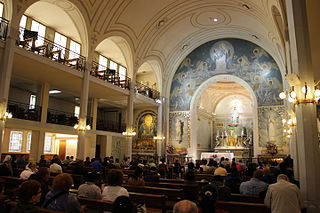
The Miraculous Medal, also known as the Medal of Our Lady of Graces, is a devotional medal, the design of which was originated by Catherine Labouré following her apparitions of the Blessed Virgin Mary in the Chapel of Our Lady of the Miraculous Medal of Paris, France.
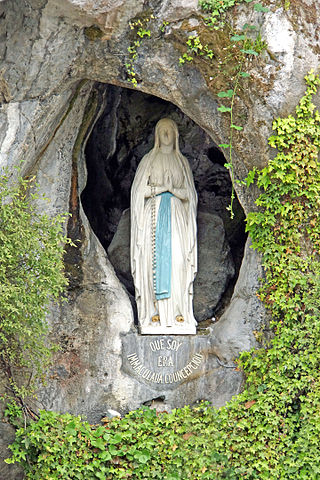
Our Lady of Lourdes is a title of the Virgin Mary. She is venerated under this title by the Roman Catholic Church due to her apparitions that occurred in Lourdes, France. The first apparition of 11 February 1858, of which Bernadette Soubirous told her mother that a "Lady" spoke to her in the cave of Massabielle while she was gathering firewood with her sister and a friend. Similar apparitions of the "Lady" were reported on 18 occasions that year, until the climax revelation in which she introduced herself as: "the Immaculate Conception". On 18 January 1862, the local Bishop of Tarbes Bertrand-Sévère Laurence endorsed the veneration of the Blessed Virgin Mary in Lourdes.

Mariazell Basilica, also known as Basilica Mariä Geburt, is a Roman Catholic church building in Mariazell, Austria. It is the most important Christian pilgrimage destination in Austria and one of the most visited shrines in Europe. In the church, a miraculous wooden image of the Virgin Mary is venerated.
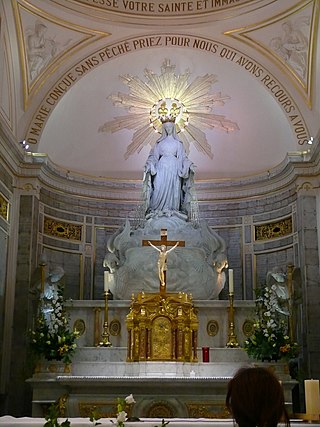
The Chapel of Graces of the Miraculous Virgin or informally the Chapel of Our Lady of the Miraculous Medal, is a Marian shrine located in Paris, France.

Our Lady of Prompt Succor is a Roman Catholic title of the Blessed Virgin Mary associated with a wooden devotional image of the Madonna and Child enshrined in New Orleans, Louisiana, United States of America. The image is closely associated with Mother Saint Michel, the Superior of the New Orleans Ursulines.
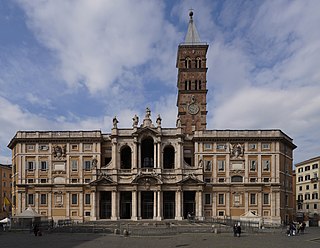
Catholic Marian churches are religious buildings dedicated to the veneration of the Blessed Virgin Mary. These churches were built throughout the history of the Catholic Church, and today they can be found on every continent including Antarctica. The history of Marian church architecture tells the unfolding story of the development of Catholic Mariology.

Catholic Marian movements and societies have developed from the veneration of the Blessed Virgin Mary by members of the Catholic Church. These societies form part of the fabric of Mariology in the Catholic Church. Popular membership in Marian organizations grew significantly in the 20th century, as apparitions such as Our Lady of Fátima gave rise to societies with millions of members, and today many Marian societies exist around the world. This article reviews the major Marian movements and organizations.

The Basilica of Our Lady of Walsingham, informally known as the Slipper Chapel or the Chapel of Saint Catherine of Alexandria, is a Catholic basilica in Houghton Saint Giles, Norfolk, England. Built in 1340, it was the last chapel on the pilgrim route to Walsingham.
Our Lady of Charity is a celebrated Marian title of the Blessed Virgin Mary venerated in many Catholic countries.
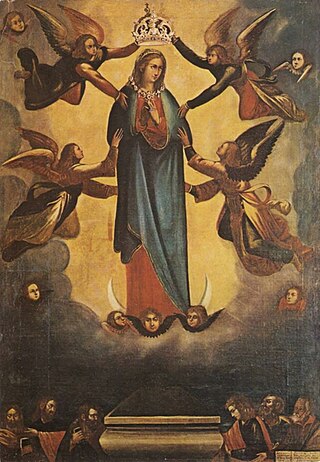
The Blessed Virgin of Ta' Pinu, or as it is known in Maltese, "Il-Madonna ta' Pinu" is a religious devotion which originated on Gozo, the sister island of Malta. The many Maltese and Gozitans living abroad have managed to spread this devotion in many other parts of the world. The Ta' Pinu Basilica, is based in Għarb.
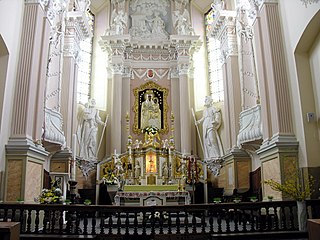
Our Lady of Šiluva is Roman Catholic image of the Blessed Virgin Mary venerated at the Basilica of the Nativity of the Blessed Virgin Mary, Šiluva shrine in Lithuania. The patriotic icon is highly venerated in Lithuania and is often called Lithuania's greatest treasure.

Our Mother of Sheshan or Our Lady of Sheshan (佘山聖母), also known as Our Mother of Zo-sè, is a celebrated Marian title of the Blessed Virgin Mary venerated by Chinese Roman Catholics. Among its religious devotees, the statue is sometimes known as Our Lady of Luck or Our Lady of Good Luck due to the Chinese symbology of "Fu" (福) associated with the styling posture of the entire image. The original image is currently enshrined in the National Shrine and Minor Basilica of Our Lady of Sheshan, in Shanghai, China.

A pilgrimage church is a church to which pilgrimages are regularly made, or a church along a pilgrimage route, like the Way of St. James, that is visited by pilgrims.

Our Lady of Consolation or Mary, Comforter of the Afflicted is a title of the Blessed Virgin Mary venerated in the Catholic Church.




















